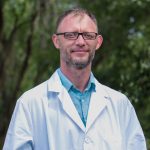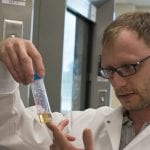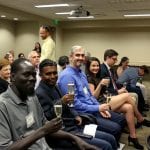Biography
Matthieu BAUDELET graduated with a B.Sc. in Physics in the University of Lille (France) in 2003, starting his experience in Spectroscopy with Fourier-Transform Microwave Spectroscopy. In 2005, he graduated with a M.Sc. in “Laser and Spectroscopy” in the University of Lyon (France) and continued to complete his Ph.D. in the ‘Laboratoire de Spectrométrie Ionique et Moléculaire’ (LASIM, Lyon) working on “Laser-induced plasma and spectroscopic analysis” showing the advantages of Laser-Induced Breakdown Spectroscopy (LIBS) for biological sensing and food monitoring. He continued his research on laser spectroscopy and sensing as a Senior Research Scientist for the Townes Laser Institute at the University of Central Florida (Orlando, FL) covering the fundamentals of laser-induced plasmas, the application of laser spectroscopies as fundamental diagnostics as well as sensing techniques for defense, industrial, environmental, biomedical applications and the study of propagation of ultrashort laser pulses for sensing purposes at distances up to the kilometer range. From 2012 to 2015, as a Research Assistant Professor of Optics in the Laser & Plasma Laboratory in the Townes Laser Institute, he further developed laser spectroscopy for atomic spectroscopy as well as electronic, vibrational, and rotational molecular spectroscopy for studying fundamentals of plasmas, quantitative analysis and sensing in tabletop and integrated configuration as well as for stand-off detection. The fields of application went from forensic science (with a secondary joint appointment at the National Center for Forensic Science) to biomedical diagnostic to manufacturing optimization. Joining the faculty of the Chemistry department at UCF in 2015 as an Assistant Professor in the National Center for Forensic Science, he developed his research to focus on the application of laser-based spectroscopic techniques for forensic analysis of tire skid marks, pollen grains and anthropological remains. Now as an Associate Professor since 2020, he is furthering the development of multimodal analysis for pollen, tire marks and forensic anthropology. Another focus of his research is to further the development of better matrix-matched standards of biomaterials for LIBS and LA-ICP-MS. His activities interest the forensic and biomedical communities as they will contribute to filling the gap in quantitative analysis required to develop new approaches to medical diagnostics and forensic decision-making.



